You feel kind of fancy when you have a new sod lawn.
It rolls out like a green magic carpet — instant grass, no waiting. Grab a couple fast food cheeseburgers and watch your fast lawn appear.
But don’t let it fool you. Sod is quick, but most people don’t realize it’s hard work to keep it healthy.
A sod lawn actually takes more work than starting a lawn from seed.
How to care for new sod?
Let’s take a look:
First Up: Your New Sod Watering Schedule
This is big. You don’t want those important roots to dry out. Sod is really thirsty in the first few weeks following installation. It needs even more irrigation than new seed does in order to get established.
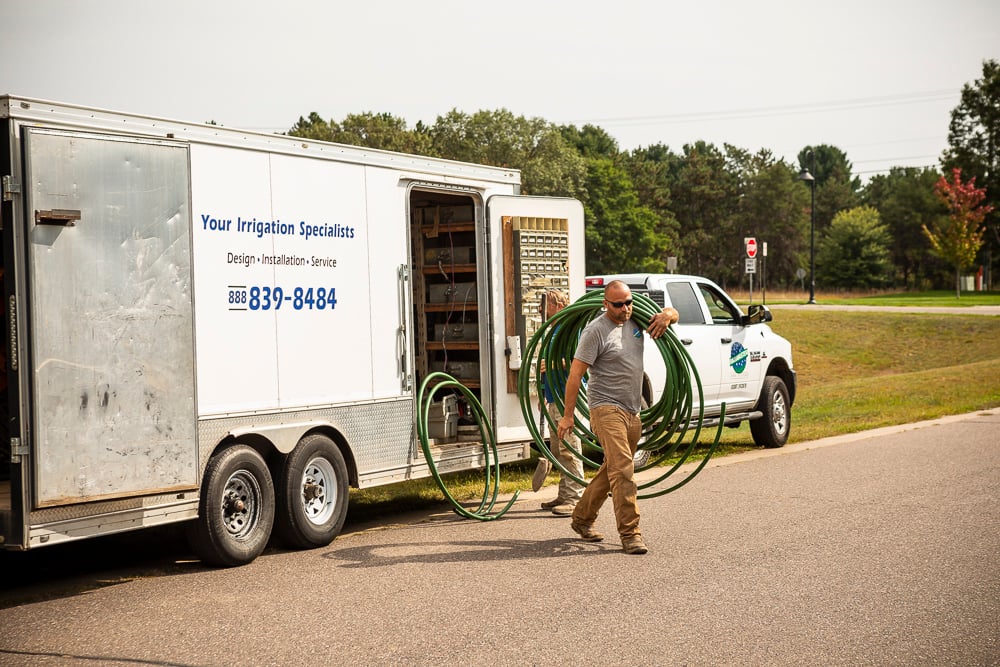
Here’s a basic new sod irrigation schedule to get you started:
- Water in the morning and mid- afternoon for 15 minutes. Do this for a month, then you’ll ease off a bit.
- Then water once a day for 25 minutes. Do this daily for 2-3 weeks.
- By the end of two months you should move from your new sod watering schedule to a regular watering schedule. Transition to longer periods of watering, but fewer times.
You want your grass to have to search for water, sending its roots deeper into the soil. That encourages the roots to grow longer and deeper, which means your grass will be healthier.
Here’s the thing — this approach could change based on your specific lawn conditions. Each yard is different. There are really no universal rules for watering your lawn.
Your goal should be an inch of water per week, and that includes any rain that falls. But lots of different factors affect how long you should actually water your lawn.
If your soil is clay, you’ll water longer than if your soil is sand.
Are you on a slope? In the shade? What variety of grass do you have? What type of soil? What kind of irrigation heads?
Confused? That’s understandable. How to care for new sod? Hire a skilled and knowledgeable irrigation company to help you assess your particular lawn and create an irrigation plan perfect for its needs.
When to Fertilize Sod
Your new sod looks healthy and green, like it just polished off Thanksgiving dinner. But it’s hungry. Give it some food right away.
A starter fertilizer will help those important roots get established.
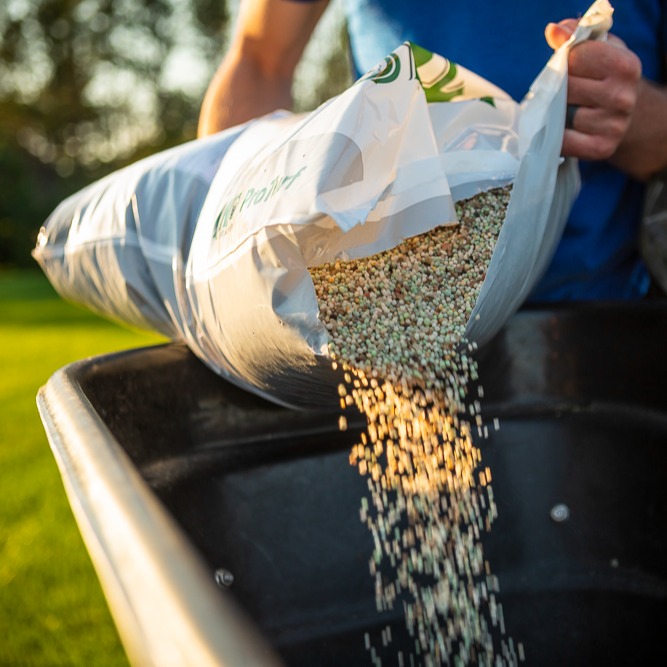
Then move on to a regular fertilizer schedule.
As for when to fertilize sod? The first round of fertilizer should be done by Memorial Day. Three more applications should happen throughout the summer.
And don’t forget about fall fertilizing. That last boost of the year gives your lawn’s roots nutrients to grow nice and deep now, with some leftover for a healthy start — and greener grass — next spring.
One thing to note: all fertilizer isn’t the same. RainMaster uses premium professional-grade formulations of granular fertilizer, which is more effective than products you can buy at the store. It breaks down slowly, giving you consistent benefits from fertilization.
One more thing to note: make sure your soil pH is correct.
A balanced lawn soil pH is key to a healthy, thriving lawn. Important nutrients for grass are available in soil when the pH is at the right level — not too acidic, not too alkaline.
If your lawn soil pH is off, your grass won’t get the nutrients it needs, no matter how much you fertilize.
So - how to care for new sod? Get a pH test.
Here at RainMaster, we consider lawn soil pH so important for lawn care in Wisconsin and Minnesota that we include pH testing in all three levels of our lawn care programs. And we include pH balancer in our top two lawn care programs in Minneapolis and Eau Claire.
New Sod Weed Control
Can’t wait to hit that new sod lawn with weed control? That seems to make sense — you don’t want those pristine green blades invaded by ugly weed villains.
But hold off a bit, please. You want your new sod roots to get established first, so the weed control doesn’t also kill the grass.
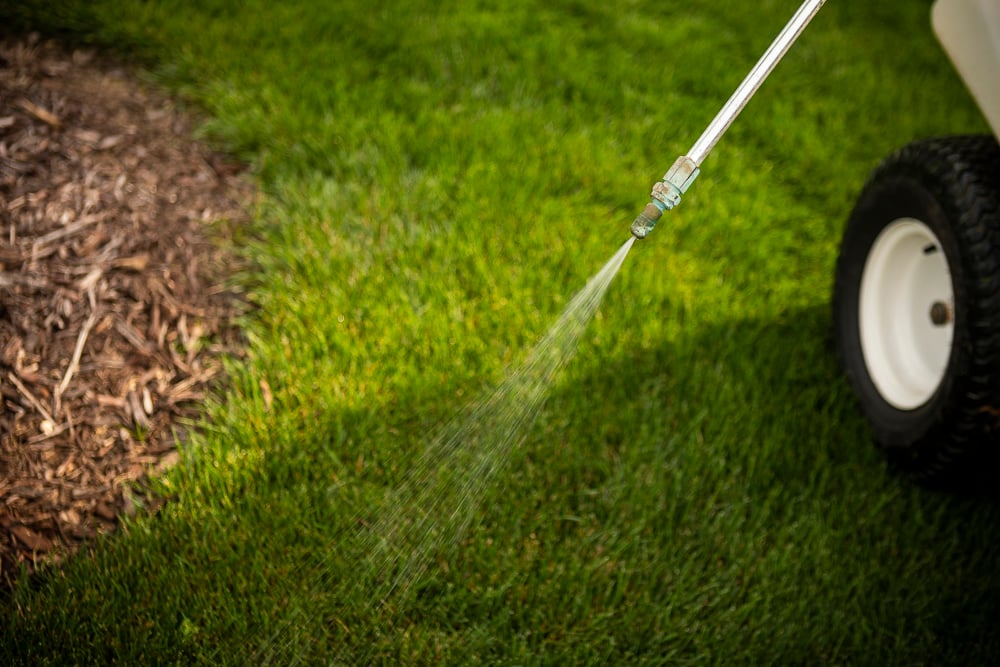
That means wait about four weeks — so mow four times before you apply new sod weed control.
While we have you here, some solid advice on how to prevent weeds:
- Mow high. Taller grass helps a lawn grow thicker.
- Water properly. A lawn that’s too wet or too dry encourages weeds.
- Get a plan. Invest in a complete, proactive lawn care program that includes both weed preventative and curative treatments from early spring to late fall.
How to Care for New Sod: How Soon to Mow
A new sod lawn makes you jump into overdrive to take care of it. It’s a big investment. It’s beautiful. You’re proud of it. You kind of want the neighbors to see you out there mowing your perfect new grass and be jealous.
But don’t mow right away.
You want to make sure the roots are established first and growing nicely into the soil.
Wait at least a week or two before you mow.
Want to check on its progress? Grab a few tufts and give it a tug. If it comes right up, the roots haven’t taken hold yet. If there’s some resistance, that’s good. It means the roots are establishing nicely.
And mow it tall — at a height of about 4 inches.
How to Care for New Sod: All About Aeration
Root to soil contact is really important as your new sod settles in. You want the new roots to mingle in with the soil and have good contact.
Once your new sod lawn is established, aeration is a key step to help the roots really intermingle with the soil.
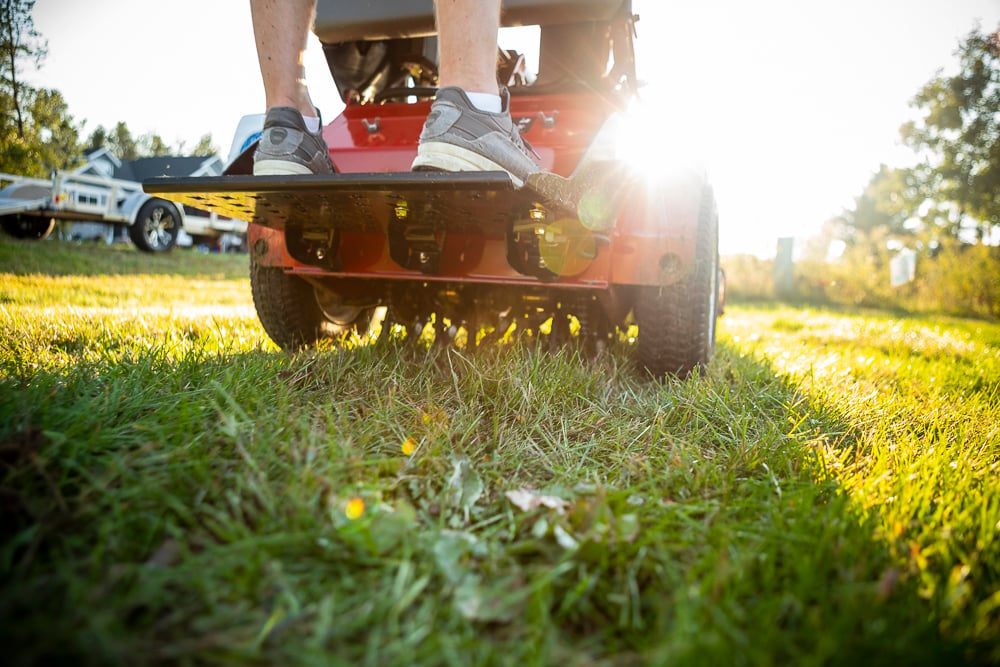
Aeration uses a machine to pull out tiny cores of soil from your lawn, allowing water and oxygen to get to the roots. It loosens up hard, compacted soil, so your lawn can breathe.
When your lawn isn't compacted, it leads to healthier roots. Healthier roots make for a healthier, thicker lawn, better able to resist pests and diseases and tolerate summer’s heat and drought.
Aeration also helps your new sod resist lawn diseases. New sod is susceptible to lawn fungus. It gets less air circulation at the soil level than a seeded lawn.
But don't aerate too soon. Wait until you’re on a regular watering schedule, about three months after installation.
Plan to aerate your sod lawn once a year for several years while it gets established.
Yikes, Will New Sod Installation Damage Irrigation?
If you have an existing irrigation system and sod installers will be laying new sod over it, or maybe even removing your old lawn first, you might be worried about damage to your sprinkler system.
A bit of pre-sod prep can help prevent damage.
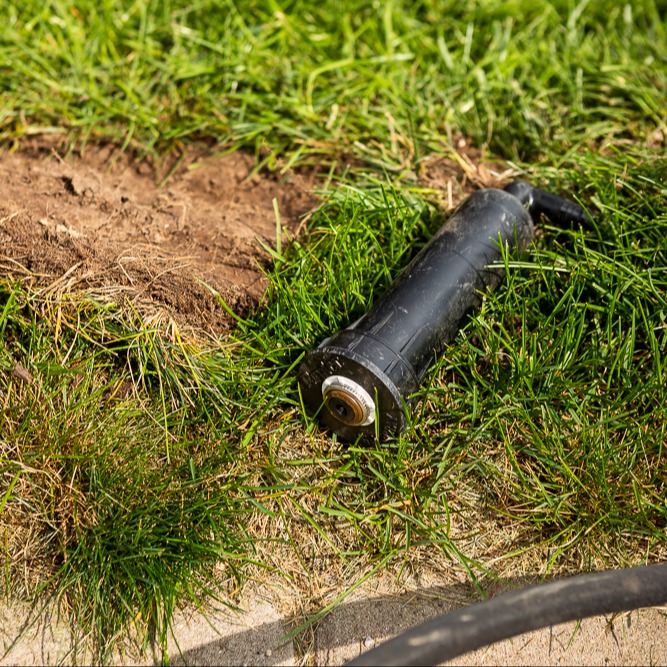
Flag your heads and valve boxes so sod installation crews know where they are. If your irrigation installers provided you a map of your irrigation lines, share it with your sod installation crew.
How to Care for New Sod? Trust RainMaster
A sod lawn is the quickest way to instant grass. But if you’re willing to wait, you’ll ultimately get better results from seed. When we install new lawns, we start with high-quality grass seed.
Either way, a new lawn needs a comprehensive lawn care program that will deliver the fertilizer, weed control and expert care it needs to thrive, as well as skilled irrigation.
Invest in a complete, proactive lawn care program to continuously improve and protect your lawn.
Let’s create a custom nutrition plan for your lawn, so the roots will be nourished, the soil packed with nutrients, and your grass thick and healthy.
You can choose from three different levels of lawn care programs at RainMaster, based on the results you’d like, how fast you want to see results, and your budget.

Luscious Lawn is a high-end, proactive program that will promote amazing lawn care results. This is the program to choose for the quickest and best results, particularly if your lawn needs a lot of help.
Terrific Turf, a mid-level option, is our most popular program to grow a thick, green lawn and deal with most challenges.
Healthy Habitat is a basic plan that includes the elements you need for a better lawn.
Your new sod lawn looks great on day one. You’re out there charging the neighbors to pose with it for pics to post on Instagram - we'll help you make sure it stays picture-worthy.
Partner with expert lawn care and irrigation in Minneapolis, MN & Eau Claire to keep it thriving for years to come.
Want to get to the bottom of your lawn problems and be confident about your choice for lawn care services? Request a quote today! We’ll review your lawn care options together so you can make a great choice for your next outdoor project.



